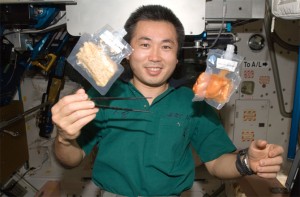Question: How do you feed a six-person crew on a three-year mission to Mars?
Answer: It’s not easy!
That point was underscored during a June 23 panel discussion on living and working in extreme conditions at the 2014 Institute of Food Technologists (IFT) Annual Meeting & Food Expo held this week in New Orleans.
A highly acceptable, nutritious food system is central to crew health and performance on a long duration space mission.
NASA is embarking on “the ultimate challenge,” to create a viable food program by 2030 that will feed a six-person team of astronauts for up to three years.
The current space food system will not meet shelf life values that may be required, noted Grace Douglas, a Human Research Program Advanced Food Technology (AFT) Portfolio Scientist at the NASA Johnson Space Center in Houston, Texas.
Gravity, pressure, and radiation
The goal of the NASA AFT Portfolio is to determine the requirements, methods, and technologies that will deliver a safe, nutritious, and acceptable food system for space travelers.
But doing so must be within the constraints of available resources and alterations in gravity, pressure, and radiation during all phases of long duration missions.
Douglas reported that AFT maintains an integrated and collaborative research plan into alternative processing, packaging, formulation, environmental conditions, and bioregenerative/surface processing systems.
That plan seeks to investigate how each of these factors can be altered or combined to provide a food system that consistently meets mission requirements and promotes crew health.
Lighter, tastier and more nutritious
Douglas notes that recent advances include a method to deliver nutrition to crew in a pressurized suit and optimization of delivery approaches of probiotics to crew in spaceflight. Probiotics are organisms such as bacteria or yeast that are believed to improve health. They are available in supplements and foods.
“We need to create a safe and nutritious food system that meets space flight requirements,” said Douglas. For example, beverages must withstand high pressure, and food must have the appropriate viscosity to remain on a fork or spoon. Optimally, the food will have “crew acceptability,” meaning the astronauts want to eat the products over many years, according to an IFT press statement.
With current prepackaged foods designed for space, six crew members living on Mars for 1,095 days will require over 13 tons (12,023 kilograms) of food.
That being the case, NASA food scientists, and other organizations, are working to make prepackaged foods that are lighter, tastier and more nutritious, with a longer shelf life.
By Leonard David

